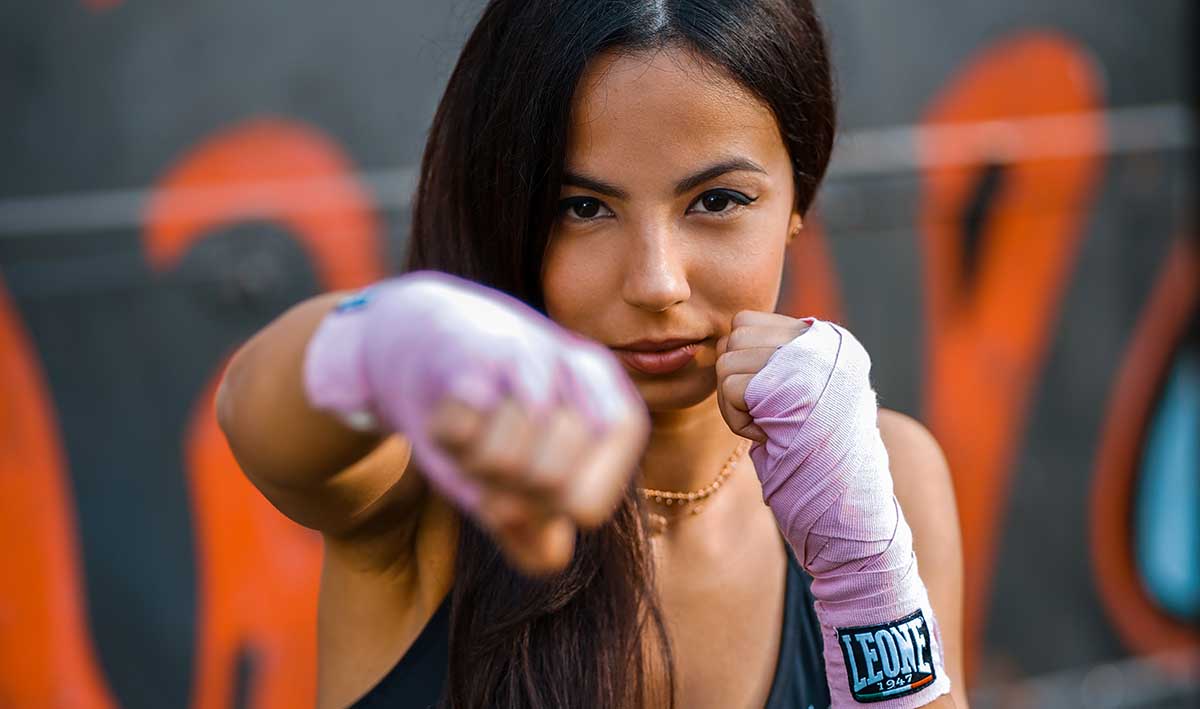
Training in sparring, regardless of the practiced discipline (meant as a combat Sport), has substantial differences from fighting with an aggressor on the street, with more or less serious intentions (eg: a quarrel, a beating by multiple attackers, an armed robbery, an attempted murder, etc.). Logically, however, to defend yourself you have to ‘use your hands’ and therefore possessing good technical skills is the groundwork for developing a solid method of combat to be applied in the street, and not only in the ring.In the chaotic context of a sudden physical clash, such as an aggression in a public place, it is also very important to be able to get the maximum performance from your motor co-ordination and instantly recover your concentration in relation to the danger you are forced to face. This implies not only knowing by heart a sequence of movements but also, above all, possessing sufficient sensitivity and promptness of reflexes to neutralize any counter-reaction (and counterattack) by the aggressor.
Since it is not easy to switch unexpectedly from a relaxed condition to a state of maximum alertness, it is vital to have developed motor automatisms matured through extensive practice sparring in the gym. On the other hand, what human beings possess and can use as weapons are arms and legs (ok, even the head); fists are fists, kicks are kicks, regardless of the terminology with which they are called in the different Martial Arts. The same for throws, articular levers, submissions, etc. By deepening the knowledge in this field it becomes obvious that you will be able to use these movements also in the context of an emergence. It is not by chance that Krav Maga (which nowadays is used as a method of self defense, but in the military can also be considered as both an offensive and defensive system) was founded by Imre Emerich Lichtenfeld, also known as Imi, who was an excellent athlete and former champion of both boxing and wrestling, and after studying judo and jujitsu was able to synthesize a combat system that has very little in common with sports… let’s say absolutely nothing.
Let’s take a clear example: hitting your opponent with your hands. The fists come from the ‘The noble art of Boxing’ (which is also the oldest method of self defense as the most instinctive, and was already being practiced in Ancient Greece); no one can question that a boxer possesses the greatest ability to hit with devastating punches and excellent reflexes to dodge the hit thrown by the opponent, and that’s why boxers are so feared. As a result, with practicing boxing you will acquire a greater ability to inflict damage with your hands, no matter whether the fist is kept closed or open, hitting with the palm of your hand (as personal defense teaches), because what gives power to the shot is the synergistic movement of the whole body, whose co-ordination is perfected by boxing. In fact, a boxer can be fatal even if he hits using a ‘palm-strike’ with bare hands.
Training the specific movements of Combat Sports or Martial Arts also generates a very important concomitant benefit: it favours the development of the student’s co-ordinative skills. The co-ordinating capacities can be divided into two families: general co-ordinating abilities and specific co-ordinating abilities. The former allow learning of a new movement, as well as the ability to control and modulate that movement (motor control). For example, learn to throw a high kick. The latter involves the ability to combine, adapt or transform the previously learned movement. In refining the boxing technique, rather than learning the kicks or projections, the following specific co-ordination skills are therefore improved:
- Ability to combine movements: this is what makes it possible to generate connections between different movements, for example relating to upper and lower limbs while throwing a striking combination.
- Balance ability: this is what allows the body to maintain the desired position. It can be subdivided into:
- Static balance ability, when the body is immobile.
- Dynamic balance ability, when the body is moving.
- Flight balance ability, when the body is not resting anywhere.
- Orientation ability: this is what allows the body to move in space and time, in relation to the environment that surrounds it.
- Rhythm ability: This is what allows you to organize your actions in such a way that the resulting motor sequence is as fluid as possible. This capability also allows you to correctly manage your energy expenditure, as well as your timing.
After learning the technique we move on to the next step: sparring in the ring. This is a great exercise to gain experience in combat, metabolize basic movements and train to perform them against an absolutely uncooperative opponent.
Through sparring the individual develops the most important co-ordinating skills, which will allow him to convert the learned movements into the most convenient gestures at a given time. This ability is dictated by three other specific co-ordinating skills:
Eye-hand co-ordination, Reaction ability, and Transformation ability.
- The eye–hand co-ordination is the ability to apply movements and force in order to make an action successful: for example, trying to shoot a basketball, jumping a wall, etc… In our case, this guarantees or precludes the possibility of striking the target that you wanted to hit: in fact, it’s frequently observed, especially in beginners, that a part of the punches thrown goes empty, which means the target is completely missed because of inaccuracy or because the opponent is too far away. Improving eye-hand coordination will help you choose which shot to throw, depending on the position of your opponent’s body. For example, if you throw a jab and cross combination towards an opponent who is a meter and a half away … you have miscalculated.
- The Reaction ability is the speed with which we respond to an external stimulus (input) by expressing the motor action (output) appropriate to the situation. It can be expressed in the following relationship: MRT = LT + ATWhere
-
- MRT: motor reaction time (from input to completion of movement)
- LT: latency time (from the external stimulus to the beginning of the motor response)
- AT: action time (from the beginning to the end of the motor response; it’s the time of the movement only)
It is possible to distinguish the Simple reaction capacity from the Complex one according to the predictability of the external stimulus.
-
-
- In the first case the stimulus is expected and defined, so the reaction is much more immediate (with a low LT): for example, athletes at the starting line of 100m wait for only one input (the start) and know that their response should be only one (start running). These motor skills are defined as ‘closed’, i.e. they are practiced without unforeseen or adaptations to external factors that can change the scenario (that is closed, in fact, to external events). In this case we are therefore talking about ‘closed skills‘.
- Much more complicated is possessing a good capacity for complex reaction, in which the stimulus is unexpected and unknown. For example, during a kickboxing fight the opponent may throw any punch (Left or Right? Straight or Hook? Etc.) or any kick (High or Low? Straight or Round? Etc.).
Processing an appropriate reaction is therefore much more difficult and time-consuming (the LT is higher in these cases). Unfortunately, however, you have very little time to understand how to react while you’re receiving punches, or you’ll get them all in your face.
Fighting is therefore a classic example of activities in which ‘open’ motor activities are required: the athlete must know how to manage an articulated neuro-psychic activity, with great environmental attention in order to understand, plan and anticipate the moves of the adversary. We are therefore talking about ‘open skills‘. After defining how to differentiate the simple reaction ability from the complex one it’s clear why practicing sparring is essential; those who practice Martial Arts or self defence without ever wearing gloves and mouthguard, without ever making a few rounds of free combat (and without ever getting involved), must be aware that they will not improve their open skills but only the closed ones (such as the 100m sprinter who triggers at the start, similarly anyone can instantly perform a technique, even complicated, to parry a certain type of punch, if he knows that the opponent is about to throw it). But this is a long-standing problem, and unfortunately the mentality of those who train or teach in this way is also ‘closed’.
- The Transformation ability is strictly related to the Complex Reaction ability and proportional to the acquired sensitivity. Such ability is necessary, for example, to avoid falling into a feint of the opponent: in such a situation it is not enough to know how to recognize the initial strike (unexpected anyway), but it is also fundamental to interrupt and reprogram the parrying that was initially taking place. In this process, the brain initially identifies a problem and, after a quick analysis in which mental processing and memory are both involved, programs solution ‘A’. Subsequently, during the implementation of this solution, will be necessary a reworking of the motor response and programming of a new solution ‘B’.
Without taking anything away from the other co-ordinative abilities, it is evident that the last three listed (Eye-hand co-ordination, Reaction ability, and Transformation ability) are absolutely the most important and plausibly the only ones that, together, allow us to escape the aggressor’s attack (who generates the input from which the following action derives). After that, thanks to the other co-ordinative abilities (combination of movements, balance, rhythm, etc.) it will be possible to beat the attacker with formidable combos.
Refining reflexes and co-ordinating appropriate motor responses also generates, over time, a very important phenomenon called conditioned reflex, which what every fighter must strive for. The conditioned reflex is nothing more than an automatism that leads the individual to perform an involuntary action as a reaction to a precise external stimulus.
All living organisms (humans and animals) associate to some primary stimuli, called unconditioned stimuli (important from the biological/living point of view), predefined and involuntary actions called unconditioned responses (or reflex response): for example, if we suddenly hear a loud noise (unconditioned stimulus) instinctively we look towards the direction from which it comes to verify what is happening (reflex response). Another example can be the closing of the eyes when an insect flies too close to our face. This is in order to guarantee the maximum probability of survival, mainly in the primitive period.
These types of reflexes are defined as unconditioned because they are innate in man: they do not require learning and are permanent.
What you must know is that it’s possible to convert an unconditioned response into a reflex conditioned by a precise stimulus (called conditioned stimulus); a conditioned stimulus is an input in itself neutral, but it can trigger an automatism in those who receive it. An example of a conditioned stimulus could be the bell sound of a boxing round: it’s a sound that will easily make you imagine a fighting scene and automatically makes you focus your attention. It will also be possible, after having assimilated the movements over time, to observe a movement of the opponent and automatically dodge his punch without even thinking of doing so, rather than deflecting a knife that is about to stab you unexpectedly.
Sparring therefore takes on a further importance, as it’s precisely the reflexes conditioning phase. The more you fight, the more your reflexes will be conditioned because of the pain caused by the strikes that you can’t parry: in fact, our body associates to an unconditioned stimulus (perception of pain) a conditioned one (the movement made by the opponent) and from that will arise the conditioned response (next time you’ll dodge that punch).
The conditioned response, or conditioned reflex, however, needs time to develop and above all, unfortunately, is not permanent and therefore it is necessary to continue practicing the exercise to maintain the acquired reactivity.
In conclusion, we give you this simple tip: DO A LOT OF SPARRING!
by Luca Arietti
KMT Instructor

